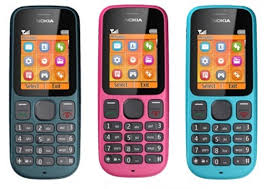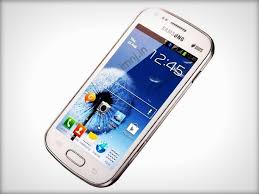Hello all
The past few months have been tumultuous, both in terms of events in the tech sphere as well as my personal life. I lost my Galaxy Nexus to a mugging, and that has made me realize that it is no longer to operate a cellphone in public in our city. What automatically follows is that if you buy an expensive cellphone, it is best to use it indoors.
However, you cannot let this thinking dominate for long; after all, there'd be no point of this blog if everyone started living in fear. That said, my sincere advice to everyone is to keep a super-cheap phone in their pockets at all times, and avoid taking their 'normal' phones out as much as possible.
Here it goes.
1) DIRT-CHEAP PHONE FOR CALLS AND TEXTS
This category is not easy to decide upon. There is so much competition that the mind boggles. Lots of other brands besides Samsung and Nokia have stepped into this arena and keep adding features while keeping the price anywhere between Rs1,000 to Rs2,000. It might be tempting to go for a Chinese brand which will give you many features for the same price, but don't. No matter how cheap a phone you plan to buy, there is no sense in throwing money away; therefore it is advisable to go for a brand like Nokia or Samsung.
My recommendation this month is Nokia 100.

For around Rs2,000, you are getting excellent telephony and a passable keypad for texting. Long battery life goes with the territory.
My previous recommendation in this category, the Nokia X2 02, remains a good phone, but its price at Rs6,500 now comes dangerously close to some Android smartphones. That's right, from Q-Mobile and others, you can now nab an Android smartphone for around Rs8-10,000. Therefore, X2-02 stands disqualified.
2) BEGINNER SMARTPHONE
Unlike a few months ago, this category is now full of compelling choices. There's the Samsung Galaxy Y, Y Pro and Duos; I believe they are hampered too much by their QVGA screens. Therefore my recommendation for this category goes to HTC Explorer once again.

Previously I had misgivings about its performance and the software (Android 2.3), but at Rs11,200 the phone is nearly unbeatable as a package.
At the upper end of the spectrum we have Sony Xperia U (Rs19,000)

Now Xperia U is a 'beginner' in price only; it sports a dual-core 1 GHz processor and comes with Android 4.0. The only possible downside is non-expandable memory (capped at 4 GB) and 3.5 inch screen, which nevertheless sports a resolution of 800x480. The main camera is the usual excellent Sony effort and there's a front camera too. The phone has only 512 MB of RAM but I have a feeling that the dual core processor will take care of that. In short, these features cannot be obtained at this price; well done Sony.
3) MID-RANGE SMARTPHONE
There is a new interesting contender in town. Meet Samsung Galaxy S Duos.

Looks similar to Galaxy S3, dual sim, dual core, 4 inch screen, Android 4.0. Priced at Rs25,000 currently, the GS Duos is an ideal piece of kit and that quite reasonable price is icing on the cake. With 768 MB RAM the phone is unlikely to suffer slowdowns. As such, even without trying it, I can say that this is quite a safe bet for a midrange smartphone. Everything else is too expensive and not worth it.
4) TOP OF THE LINE SMARTPHONE
Yeah, you guessed it. I will STILL recommend my beloved Galaxy Nexus.

With Jelly Bean and even rumoured Androud 4.2 which is almost sure to make it to Galaxy Nexus, the phone keeps getting better. It's specs may now be so last year (dual core 1.2 Ghz processor, 4.65 inch HD display), but think: the added advantages you are getting with Galaxy S3 is quad core processor, more memory and a tad larger screen. In my opinion, the Galaxy Nexus works so well, you don't need to go further. Yes, the 16 GB memory cap is a limitation, but as I have discovered, you can easily live with that. The sheer elegance of the phone's hardware and pure Android UI is unbeatable - the phone just works, day in and day out, with amazingly smooth performance and no bugs to speak of. With the price hovering around the Rs35k mark, there is simply no better overall package on the market.
The past few months have been tumultuous, both in terms of events in the tech sphere as well as my personal life. I lost my Galaxy Nexus to a mugging, and that has made me realize that it is no longer to operate a cellphone in public in our city. What automatically follows is that if you buy an expensive cellphone, it is best to use it indoors.
However, you cannot let this thinking dominate for long; after all, there'd be no point of this blog if everyone started living in fear. That said, my sincere advice to everyone is to keep a super-cheap phone in their pockets at all times, and avoid taking their 'normal' phones out as much as possible.
Here it goes.
1) DIRT-CHEAP PHONE FOR CALLS AND TEXTS
This category is not easy to decide upon. There is so much competition that the mind boggles. Lots of other brands besides Samsung and Nokia have stepped into this arena and keep adding features while keeping the price anywhere between Rs1,000 to Rs2,000. It might be tempting to go for a Chinese brand which will give you many features for the same price, but don't. No matter how cheap a phone you plan to buy, there is no sense in throwing money away; therefore it is advisable to go for a brand like Nokia or Samsung.
My recommendation this month is Nokia 100.
For around Rs2,000, you are getting excellent telephony and a passable keypad for texting. Long battery life goes with the territory.
My previous recommendation in this category, the Nokia X2 02, remains a good phone, but its price at Rs6,500 now comes dangerously close to some Android smartphones. That's right, from Q-Mobile and others, you can now nab an Android smartphone for around Rs8-10,000. Therefore, X2-02 stands disqualified.
2) BEGINNER SMARTPHONE
Unlike a few months ago, this category is now full of compelling choices. There's the Samsung Galaxy Y, Y Pro and Duos; I believe they are hampered too much by their QVGA screens. Therefore my recommendation for this category goes to HTC Explorer once again.
Previously I had misgivings about its performance and the software (Android 2.3), but at Rs11,200 the phone is nearly unbeatable as a package.
At the upper end of the spectrum we have Sony Xperia U (Rs19,000)
Now Xperia U is a 'beginner' in price only; it sports a dual-core 1 GHz processor and comes with Android 4.0. The only possible downside is non-expandable memory (capped at 4 GB) and 3.5 inch screen, which nevertheless sports a resolution of 800x480. The main camera is the usual excellent Sony effort and there's a front camera too. The phone has only 512 MB of RAM but I have a feeling that the dual core processor will take care of that. In short, these features cannot be obtained at this price; well done Sony.
3) MID-RANGE SMARTPHONE
There is a new interesting contender in town. Meet Samsung Galaxy S Duos.
Looks similar to Galaxy S3, dual sim, dual core, 4 inch screen, Android 4.0. Priced at Rs25,000 currently, the GS Duos is an ideal piece of kit and that quite reasonable price is icing on the cake. With 768 MB RAM the phone is unlikely to suffer slowdowns. As such, even without trying it, I can say that this is quite a safe bet for a midrange smartphone. Everything else is too expensive and not worth it.
4) TOP OF THE LINE SMARTPHONE
Yeah, you guessed it. I will STILL recommend my beloved Galaxy Nexus.
With Jelly Bean and even rumoured Androud 4.2 which is almost sure to make it to Galaxy Nexus, the phone keeps getting better. It's specs may now be so last year (dual core 1.2 Ghz processor, 4.65 inch HD display), but think: the added advantages you are getting with Galaxy S3 is quad core processor, more memory and a tad larger screen. In my opinion, the Galaxy Nexus works so well, you don't need to go further. Yes, the 16 GB memory cap is a limitation, but as I have discovered, you can easily live with that. The sheer elegance of the phone's hardware and pure Android UI is unbeatable - the phone just works, day in and day out, with amazingly smooth performance and no bugs to speak of. With the price hovering around the Rs35k mark, there is simply no better overall package on the market.
